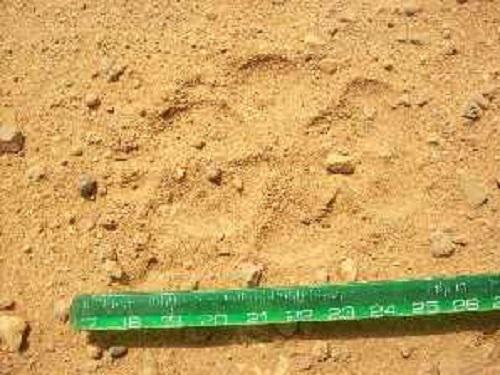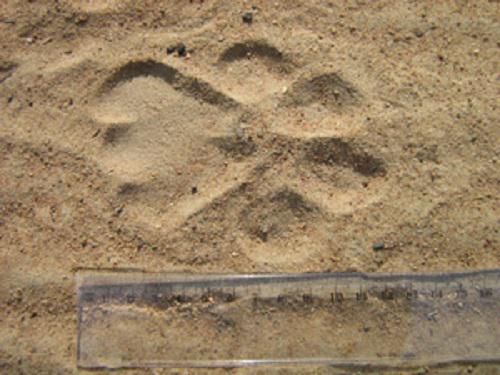Barbara Croes
The project aims to implement a long-term monitoring system through the training of local eco-guards (identification of signs and camera trapping) to eventually enhance management of large carnivores which suffer from poaching, decreased prey densities, and conflicts with humans in this poorly studied area.

Dogtrack.
Large carnivores in West and Central Africa are poorly studied, while their conservation has become a priority, primarily due to a lack of accurate data on carnivore presence and distribution in this regional stronghold. The Bénoué Ecosystem (BE) in North Cameroon is a stronghold for lion, leopard and spotted hyena while the status of painted dog needs to be updated urgently. These large predators suffer from various threats, such as poaching, poisoning and expanding agricultural fields, generally associated with a rapid human population growth in the region. A further impact on carnivore numbers in the extensive hunting zone network comes from hunting quota settings (for e.g. lion, spotted hyena), which are currently not science-based, but based on old carnivore population estimates while carnivore numbers are regionally declining.

Lion track. © Ahononga Fiacre Codjo.
We will initiate a carnivore monitoring program, based on a combined camera trapping - and track survey technique. This method was recently shown to be effective for studying large carnivore distribution in the core area of the BE. The technique combines the use of camera-traps at set distances along the existing road network with track counts on these same roads to back up and verify camera-trapping results. We will upscale this novel technique to the larger BE to generate population data on elusive carnivores on a regional scale. While data on all present carnivores will be recorded and analysed, additional efforts will be made to find evidence of painted dog presence since the status of this species needs to be updated urgently.
To ensure the successful implementation of the monitoring program, we will train several local eco-guards in track identification as well as in maintenance and set-up of camera traps.
The training of local guards is a priority of this project since skilled local staff to implement monitoring surveys over large areas and over extensive periods of time is urgently required and essential to continue monitoring large carnivores in the future. Additional training sessions will be organized to enhance the knowledge of park- and hunting zone staff on general large carnivore ecology and their crucial function in the ecosystem.
With the presence of several trained eco-guards and park management staff who understand the challenges of protecting large carnivores, we expect that at the end of this project we will have initiated a large carnivore monitoring system on which scientifically-sound management actions (such as determination of species-specific hunting quota) in the BE can be based.